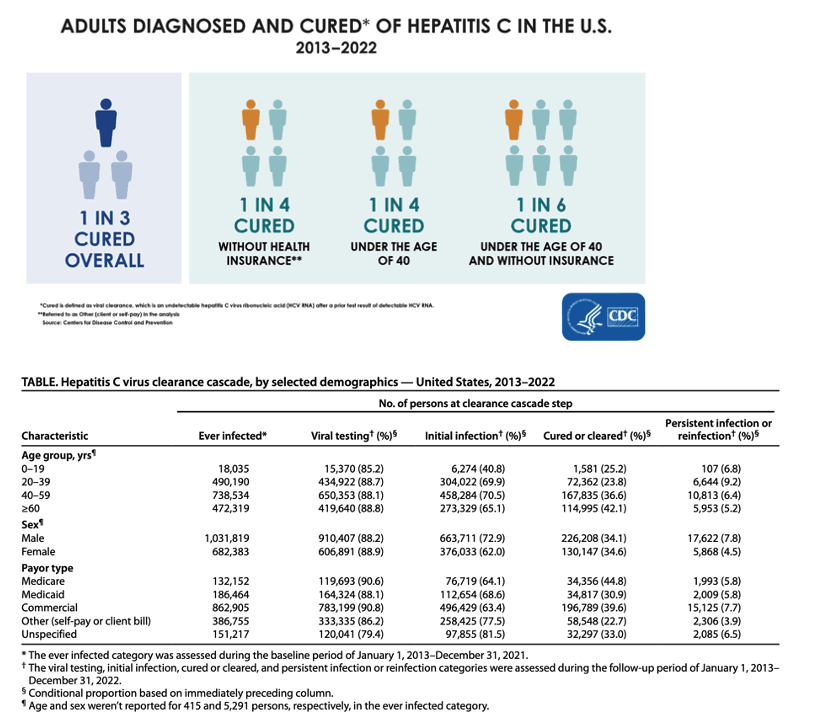| |
CDC Hepatitis C Virus Clearance Cascade US 2013-2022:
increased HCV screening required to achieve elimination
|
| |
| |
Download the PDF here
Weekly / June 30, 2023
Increased access to diagnosis, treatment, and prevention services for persons with or at risk for acquiring hepatitis C needs to be addressed to prevent progression of disease and ongoing transmission, and to achieve national hepatitis C elimination goals. Overcoming these barriers requires implementation of universal hepatitis C screening recommendations including HCV RNA testing for all persons with reactive HCV antibody results, provision of treatment for all persons regardless of payor, and prevention services for persons at risk for acquiring new HCV infection.
Using U.S. longitudinal commercial laboratory data, this report presents an HCV clearance cascade with data for approximately 1.7 million persons with evidence of a history of HCV infection during the DAA era.
8-12 week short-course of well-tolerated, oral-only treatment with DAA agents is recommended for nearly all persons with HCV infection (5) and results in a cure in ≥95% of cases (6). A national program to eliminate hepatitis C in the United States was proposed earlier this year (7) to provide an opportunity to accelerate national efforts toward eliminating hepatitis C.
These observations are consistent with recently published hepatitis C treatment coverage data among insured adults (9) and highlight the large gap between current viral clearance and the nation’s goal of ≥80% viral clearance among persons with diagnosed hepatitis C by 2030 (3).
Summary
What is already known about this topic?
The Viral Hepatitis National Strategic Plan for the United States calls for ≥80% of persons with hepatitis C to achieve viral clearance by 2030. Assessing progress toward elimination goals requires monitoring hepatitis C virus (HCV) clearance.
What is added by this report?
An analysis of the HCV clearance cascade using 2013-2022 national HCV testing data found that the prevalence of viral clearance among persons with diagnosed hepatitis C was only 34% overall and was even lower (16%) among persons aged 20-39 years with other payor (client or self-pay) insurance.
What are the implications for public health practice?
Increased access to diagnosis, treatment, and prevention services for persons with hepatitis C would prevent progression of disease and ongoing transmission and achieve national hepatitis C elimination goals.

| |
| |
| |
|
|
|